American Annihilation: US families face a unique danger – murder from within
This story contains discussion of domestic violence, murder and suicide. If you or someone you know needs help, call the National Suicide Prevention Lifeline 800-273-8255 or National Domestic Violence hotline 800-799-7233 or seek out other local resources.
BLOOMINGTON — At first, Lauren Hash thought her best friend was sleeping.
She opened the door to Emma Mumper's bedroom, ready to tease her about being late for their Labor Day weekend plans — brunch and a movie.
“Time to get up, we need to go!” Lauren called to Emma, who was still tucked into bed.
She touched her foot, shook her leg, called her name. No response. Then she looked up and found the answer to her friend’s silence: blood on the wall.
Lauren went to the master bedroom to find help. When she opened the door, there was no sign of Emma’s father. But her mother, Greta, was lying in a bloody bed.
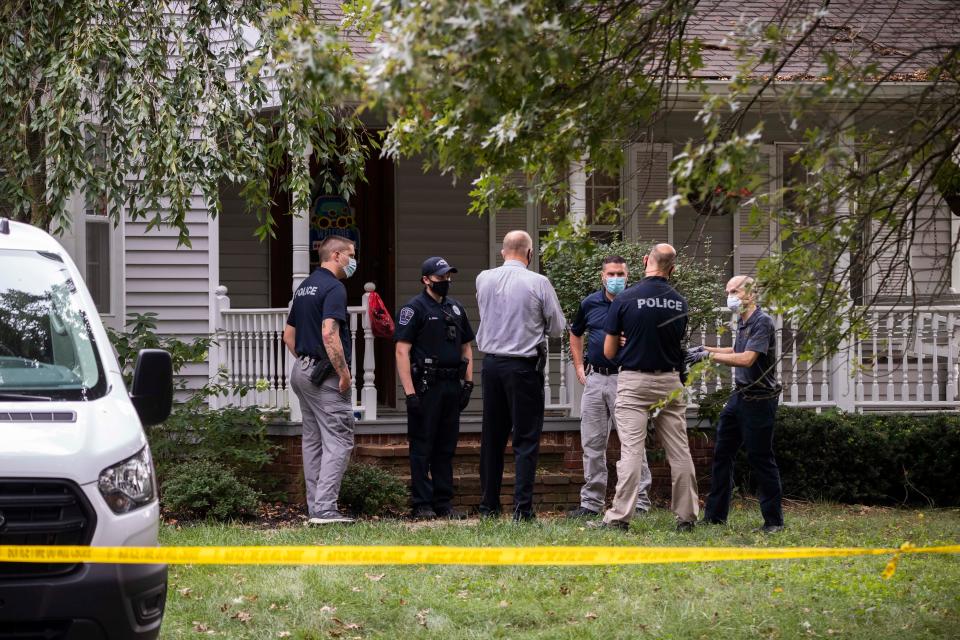
Lauren called 911. The operator asked if there was anyone else in the house.
There was one other bedroom to check. Clutching the phone, Lauren hoped to find Emma’s brother, Jake, still alive. She cracked open his door and called his name. No one answered.
Greta, Jakob & Emma: A man killed his wife, son and daughter in prime of their lives: Who they were
Lauren went back outside to her car to wait for the police. As officers searched the house, they found three members of the Mumper family dead in their beds. Police also discovered Jeffrey Mumper, the 61-year-old husband and father of the victims, dead in the bathroom.
As police recovered Mumper’s body and a handgun, a clearer picture of the events from Sept. 6, 2020, began to emerge. The coroner confirmed it soon after: Jeffrey Mumper shot his wife, son and daughter in the head as they slept, then turned the gun on himself. He spared only the family’s cat and dog.
In the days that followed, police and the media described the case as a murder-suicide. But what Mumper did has a different name: family annihilation. And it appears to be a growing, predominantly American phenomenon.
The characteristics and prevalence of this crime remain relatively unknown. Communities where these annihilations occur often see them as isolated tragedies — but they have just one piece of the puzzle. Few are seeing the bigger picture: The missed warning signs, controlling and angry men, and an impact that reaches far beyond one family.
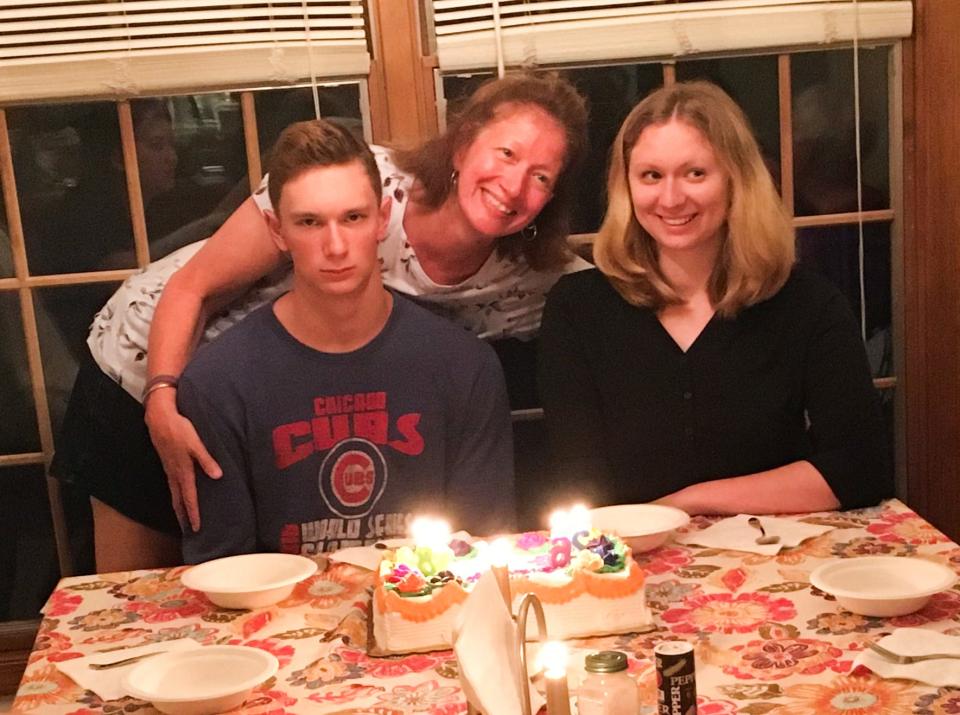
A new tragedy every 5 days in U.S. since 2020
The Mumper killings are among at least 227 family annihilations across the U.S. since 2020, according to an Indianapolis Star analysis of media reports and data from Gun Violence Archive.
That's an average of one family annihilation every five days. The death toll: 754.
Researchers have only recently focused on these cases as a specific category of crime. The first study on the characteristics of familicide was published in 1995, and there have only been a handful of studies in the decades since. No comprehensive, public repository for family annihilation data exists. There's not even a universally accepted definition in terms of the number of deaths or the relationship between victims and killer.
American Annihilation: What's behind the growing trend of a person, most often a man, killing their own family?
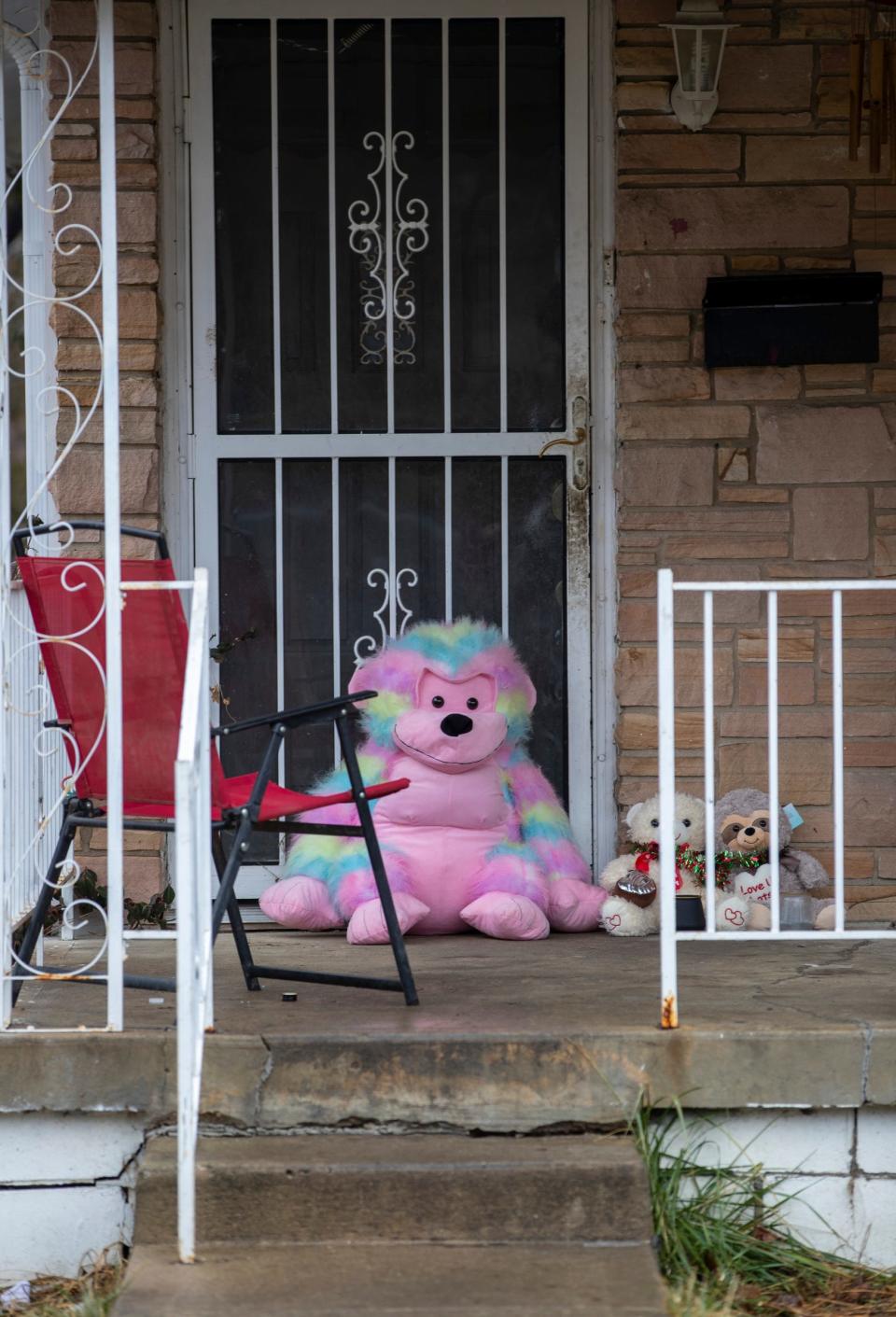
IndyStar's examination focused on cases in which a person kills at least two types of immediate family members — a spouse or partner, children, parents, or siblings. The analysis also included killings involving ex-spouses, ex-partners and stepfamily. Family annihilators killed themselves in 64% of the cases.
The killing of five people and an unborn child in Indianapolis on Jan. 24, 2021 — the city’s worst mass killing in more than a decade — started with the kind of family dispute that plays out in nearly every home with a teenager. Raymond Ronald Lee Childs III, then 17, now faces murder charges in the fatal shootings of his mother, father, two siblings, and a pregnant teen. Another brother was shot and left for dead, but survived.
Court documents say the shootings spun out of an argument over Childs staying out late. The surviving brother told police their father's last words to his killer were "I'm sorry Raymond; I love you."
Indiana had three other family annihilation cases in 2021, including two in Fort Wayne: In June, a man fatally stabbed his girlfriend, her 5-year-old son, 3-year-old son and 2-year-old daughter; in November, a 20-year-old man shot and killed his mother, father, 15-year-old sister and himself.
American Annihilation: A look at 'family annihilation' cases in Indiana since 2020 killings in Bloomington
And in July 2021, a 27-year-old man in Lafayette shot and killed his girlfriend and their 3-year-old daughter. Before she died, the little girl told police, "My daddy killed me."
These are among the most extreme cases of domestic violence, representing a fraction of the thousands of men, women and children injured or killed each year by a loved one or relative. But these heinous crimes create questions and demand answers.
“We don’t know much,” said Dr. Jacquelyn Campbell, a professor at Johns Hopkins University and one of the nation’s leading experts on domestic violence and homicide. “If we had a better handle on the risk factors, we could do some prevention work.”
IndyStar's examination of thousands of homicides, including the 227 cases of family annihilation since 2020, reveals men are almost always the perpetrators. It also found:
Primary risk factors include prior domestic violence, substance abuse, and access to guns.
The killer was a male in 94% of the cases.
A gun was used in about 86% of cases. Other methods include stabbing, strangulation, blunt force trauma, asphyxiation and arson.
More than three-quarters of the cases occurred in the South and the Midwest. Texas had the most — 33 — followed by Florida, Arizona and Ohio. Only 10 states and the District of Columbia had none.
“We like to think of the family as a crucible of love and affection,” criminologists James Fox and Jack Levin wrote in their book, “Extreme Killing: Understanding Serial and Mass Murder.”
“Hence, murder by the hands of a family member can be too much for the mind to fathom.”
Learn more: See IndyStar's searchable database for details on family annihilation case since Jan. 1, 2020.
But it's happening across the U.S., and the number is going up by the year. There were 62 cases in 2020, 61 in 2021, and 72 in 2022. There already were at least 32 in 2023 through the end of April, a pace that could lead to nearly 100 incidents this year.
The televised murder trial of Alex Murdaugh put a spotlight on the issue earlier this year. The disgraced personal injury lawyer was convicted in March for shooting his wife and son in 2021. Prosecutors in South Carolina argued Murdaugh murdered them to divert attention from his financial crimes and opioid addiction.
“Those pressures mount,” prosecutor Creighton Waters said during closing arguments, “and that person becomes a family annihilator.”

Birthday card days before killing: 'I love you.'
Jeffrey Mumper was quiet and socially isolated. He worked as a medical physicist at IU Health Cancer Radiation Center and previously as an adjunct instructor in Indiana University's physics department.
The 61-year-old’s motives in killing his family remain unclear. In the face of impossible questions, there are only theories.
Family and friends say Mumper was facing a late-stage cancer diagnosis and an impending divorce. Greta Mumper's nephew, Erich Sands, wondered if he wanted to “take” the family with him in death.
“I like to think that he loved them,” Sands said. “He just wasn’t the best at showing it.”
Mental health resources: Where to get help for suicidal thoughts, child abuse, domestic violence
Others recall an emotionally abusive marriage. Greta Mumper’s close friend, Susan Stephens, described Mumper as a passive-aggressive and unsupportive husband. She said he left Greta to take care of everything: the house, the kids and her ill mother-in-law.
“Greta used to say that he could be selfish,” Stephens said. “When she had concerns about the kids, she was basically on her own. It was like he just couldn’t be bothered.”
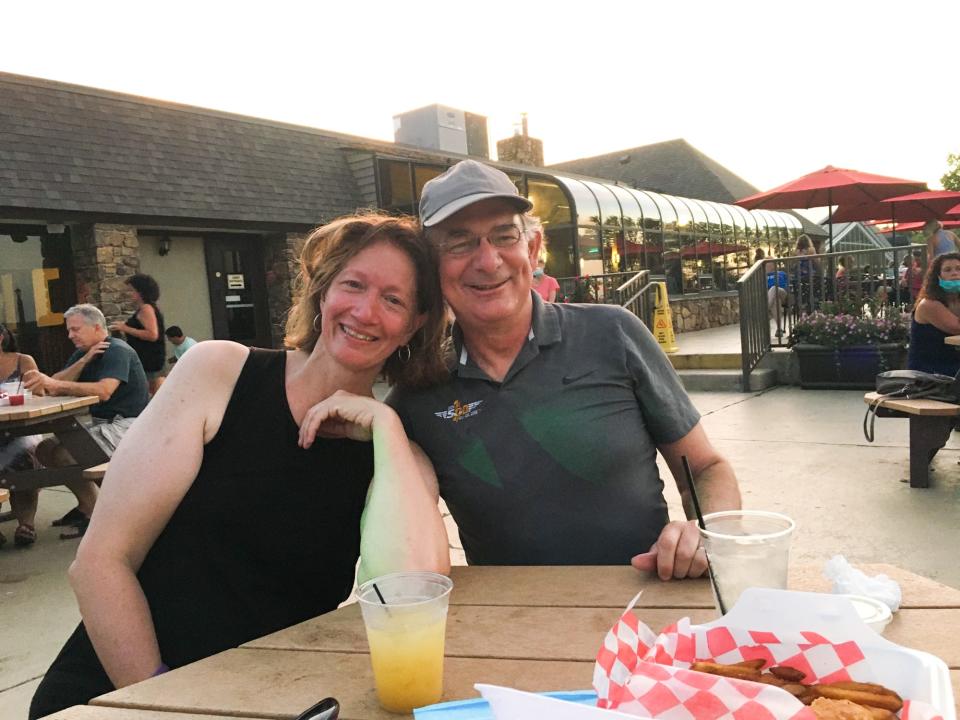
Stephens said Greta had been unhappy in the marriage for at least 10 years.
“Greta wanted to divorce him. He wanted things to go on the way they were,” said Stephens. “That wasn’t enough for her anymore. She wanted to be happy.”
Greta’s plans to leave the marriage were put on hold when the family received Mumper’s cancer diagnosis, Stephens said. Instead, she stayed and took care of him. She was there for every doctor’s appointment.
"She drove him to stinking chemo,” Stephens said, crying. “She got shot in the head. That’s what she got for her compassion.”
A week after the murders, Stephens was among relatives and friends who returned to the Mumper house to collect what was left. Everything appeared normal until she passed through the living room.
There was a card on the mantel, dated Aug. 28 — Greta’s birthday.
Stephens opened it and read the message, from husband to wife, written just nine days before the murders.
“Happy birthday, Greta," Mumper had written. "I love you.”
Killings driven by 'a very narcissistic orientation'
What makes a person — most often a man — kill their family?
“It’s a very narcissistic orientation,” said David Adams, a Boston psychologist and the author of "Why Do They Kill?: Men Who Murder Their Intimate Partners."
“You’re basically saying, ‘I don’t want to live my life, and I don’t want anyone else to live either.’”
A distinct profile emerged from the IndyStar investigation and other research: The family annihilator's violent actions are rooted in their failures, insecurities and inability to control their fate. Circumstances — impending divorce, financial difficulties, illness — have robbed them of the life they had imagined. So, they decide to take the lives of those closest to them.
Family annihilators identified by IndyStar included insurance agents, high school students, pastors, former police officers, stay-at-home moms, gun instructors, football coaches, actors, engineers, welders, veterans, golf caddies, school custodians, emergency medical technicians, border patrol agents and more. Many of these killers — perceived as educated, hardworking and family-oriented — flew under the radar of law enforcement, neighbors, their communities, and even their own families.
While every case is unique, a 2014 literature review identified common motives in family annihilation: suicide, immortality, control and revenge.
In some cases, an annihilator plans his wife and children’s deaths as an extension of his own suicide, believing the family cannot go on without him.
Other times, according to the "Journal of Family Violence," he wishes to immortalize his family in death and protect them from experiencing hardships or failures.
Finally, there are cases in which a perpetrator is enraged at his spouse or partner, angry at their attempts to leave or believing they have been unfaithful. The killer then seeks revenge by destroying the family they created together, exercising one final act of control.
In Mumper's case, Adams said he may have struggled to come to terms with his own impending death from cancer and decided to “take” his family with him. He may have also harbored aggrievement toward his wife for wanting to leave their marriage.
“The typical family killer is more likely to be concerned about losing control over more than just his wife or family. His concern is more often with losing control over all aspects of his life,” forensic psychologist Charles Ewing wrote in his book, "Fatal Families: The Dynamics of Intrafamilial Homicide."
“He is a man, who in his own eyes, is, or is about to become, a failure.”
Ewing notes that these types of murders strike a symbolic blow against the institution at the heart of our social order — the family.
“We can and do take all sorts of steps to minimize the risk of being murdered by strangers. Yet there is very little, if anything, we can do to reduce what is for most of us the much greater risk of being killed by members of our own families," he wrote.
“Every intrafamilial homicide is a reminder that — even in safe neighborhoods, behind locked doors, and protected by alarms and weapons — we are all vulnerable.”
Looking back for missed signs
For Amanda Okulski, Jakob Mumper’s 18-year-old girlfriend, it was impossible to reconcile who she thought Jeffrey Mumper was and what he did. This was the man she sat beside on the bleachers at Jake’s high school swim meets.
Amanda even skipped Jake’s 18th birthday party during the pandemic. She was afraid of spreading the coronavirus to his father while he was battling cancer.
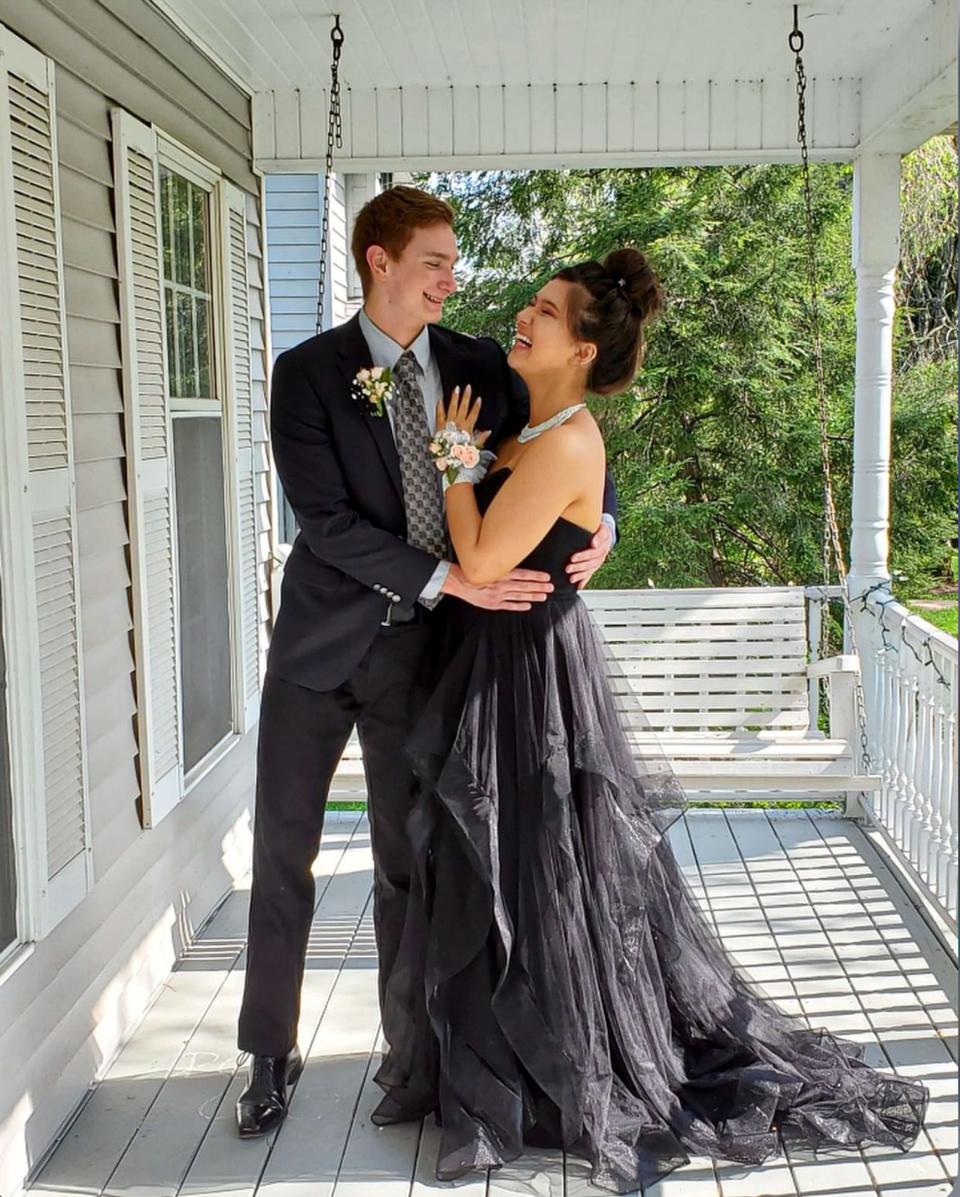
Looking back, Amanda wondered how she didn’t see the signs, if there were any signs to see. How did she not know what was coming?
That’s not unusual. Bloomington police said they had no record of domestic violence reports or runs involving the Mumper family. But the IndyStar investigation found many other example where authorities — including landlords, police and judges — knew of threats and violence yet failed to intervene.
In three cases reviewed by IndyStar, a judge had denied a woman's request for a protective order before she was killed, citing insufficient evidence of threats or harm from perpetrators. Even when such orders were issued, they sometimes failed to prevent the violence. In at least eight cases, victims with protective orders and their families were still killed. The result: 29 dead.
In one case, a New Jersey woman with a protective order begged her apartment complex to change the locks on her door. They never did. Her husband, who had threatened to kill her, used his old key to get in, then stabbed the woman and her two young children to death.
The investigation found protective orders weren’t the only problem — police inaction contributed to several deaths. Just days before a Florida man shot and killed his wife, 15-year-old son, mother-in-law and himself, police responded to a report of gunfire at the couple’s apartment. Officers left without arresting anyone.
“I don’t think anything bad is going to happen,” one officer is heard saying in body camera footage.
In another case, an Ohio police department opened an internal investigation after officers responded to reports of a woman being threatened by a man with a gun. They left and failed to file a written report of domestic violence. Hours later, the man shot and killed his girlfriend, 6-year-old daughter and himself.
“They didn’t do their job,” the victim’s sister told Dayton 24/7 Now. “Now Aisha and Harper are gone.”
At least seven cases also involved perpetrators who were out on bond, often on charges related to the victims they ultimately killed. A Michigan man was free on bond after allegedly strangling his girlfriend with an extension cord, torturing her with a red-hot spatula and sexually assaulting her. While out, police say he killed his girlfriend, mother and stepfather.
In Washington state, a man awaiting trial in a murder case was re-arrested for assaulting his ex-girlfriend while on bond. He was released again, allowing him to kill the woman and her 7-year-old daughter.
'They're almost always done with guns.'
Family annihilations appear to be a predominantly American phenomenon that may be related, at least in part, to the country's high rate of gun ownership.
The U.S. has three times more family annihilations than Canada, eight times more than Great Britain and 15 times more than Australia, according to The National Institute of Justice.
“Owning a gun, on you or in your house, is highly related to domestic violence homicides,” said Campbell, the expert from Johns Hopkins University. “They’re almost always done with guns.”
Several perpetrators illegally possessed the guns they used to kill their families. Some were barred through their victim’s protective order or the terms of their bond. A Texas man shot six family members, including his son, who was trying to take him to a mental health facility at the time of the killings. As a convicted felon, he was barred from owning or possessing guns.
A recent study in California found that people living with someone who owns a handgun are seven times more likely to be shot by their spouse or intimate partner.
"The vast majority of victims in these intimate partner shootings — 84% in all — were female,” wrote David Studdert, a professor of law and health policy at Stanford University. “Women bear the brunt of any second-hand risks that flow from firearm ownership.”
So do children.
An investigation by The Trace and USA TODAY found American children are three times more likely to be shot at home than at school — and the majority of perpetrators are their parents or guardians. When a person kills both their intimate partner and children, it becomes a family annihilation.
Like other forms of domestic violence, family annihilations appear to be on the rise since the pandemic. But it’s impossible to know exactly how many have occurred because of incomplete and inaccessible data. The National Violent Death Reporting System tracks multi-element crimes like familicide across the U.S. But not every state turns over their data and accessing information about specific cases requires approval from a CDC committee.
Advocates say public awareness of this type of family violence is needed now more than ever — especially after a federal appeals court in Texas ruled people with protective orders against them can legally have guns.
The judge who wrote the opinion said gun restrictions for domestic abusers would be an "outlier that our ancestors would never have accepted." In June, the U.S. Supreme Court agreed to review the case.
Caryn C Burton, the homicide reduction strategies coordinator for Indiana Coalition Against Domestic Violence, said the appellate ruling will cost lives.
“It’s a natural conclusion," she said, "that there will be more familicides.”
A secret gun and a new box of bullets
Greta Mumper's family believes the murders were premeditated. Her brother-in-law discovered bullets and an empty gun box in the family’s garage. A receipt showed they were purchased in 1994.
“He had that gun all those years, and my sister never knew,” said Erika Sands.
Bloomington police would not comment on details of the case and refused to release their report on the investigation, citing it as a record exempt from public disclosure. IndyStar has challenged that denial, and an appeal is pending before the Indiana Public Access Counselor.
But the decades-old gun and box of bullets weren't all the family found that pointed to premeditation. There was a new box of ammunition, too. The family sees that as a sign he planned the killings and did not want to take a chance using the old ammunition.
"He went out and bought fresh bullets," Sands said.
“I know husbands kill their wives,” she continued. “I know no marriage is perfect. But why would you kill your children? As a parent, I don’t understand that. I will never understand that.”
Survivors: injured, traumatized, orphaned
While much remains to be learned about the motives and triggers that drive family annihilations, the impact extends far beyond the killer and the victims. One selfish act detonates like a bomb, ripping apart families, leaving behind emotionally and physically scarred survivors and haunting the lives of everyone who knew those involved.
Most family annihilators never face justice. Their victims are forever silenced, unable to testify about what happened to them. The lives and memories of those killed are indelibly tied to the hands that took them. Unanswerable questions eat at those left behind, including what, if anything, they could have done.
Police follow-up is rare, especially when there is no suspect to arrest or convict. With tight budgets and other active cases, departments move on. There is no closure.
Then, there are the survivors. Injured. Traumatized. Orphaned.
Some fought for their lives in their homes and then hospital beds, including a 20-year-old Ohio woman — shot in the head by her mother — who later regained consciousness but still cannot speak. She is the sole survivor of the shooting, which killed her father, grandfather, 13-year-old brother and mother.
Another young woman was strangled by her father, who was a Texas pastor and non-profit founder. He killed his wife and 11-year-old son before driving to his daughter’s college campus. She survived the attack. He killed himself the next day.
Other survivors escaped physically unharmed, but mentally scarred. “Daddy was coming over for my birthday,” an 11-year-old girl told police in New York. “Then he shot people.” She hid in the closet as her father killed her mother, sister and himself.
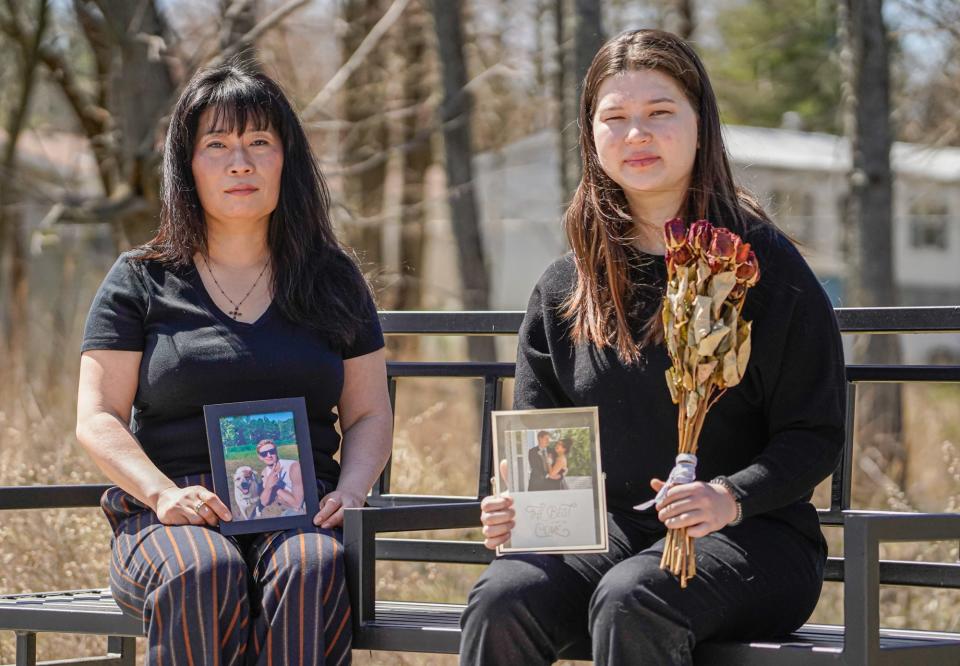
In the face of such violence and loss, people outside the situation often look for easy answers or even justification for these events.
Adams, the Boston psychiatrist and author, said he sympathizes with those who were caught off guard and left behind.
“We want reasons for things,” he said. “It’s hard to accept that you may never know.”
Laura Okulski, Amanda’s mother, understands there are no easy answers.
"What happened with Jeff and how he annihilated his family is not simply a mental health issue. It's not simply a gun control issue. It's not simply a domestic violence issue. It's so complicated," she said.
"I don't want to excuse Jeff Mumper. I want to forgive, I'm not there yet. But he's robbed three beautiful people of their future. He's robbed us of beloved friends ... all three of them were in the prime of their lives, and so it's impacted Bloomington in such a profound way."
Fallout still ripples through friends, town
As the months passed, the Okulskis and others who loved the Mumper family faced a special kind of hell.
Every time Stephens drove by the Irish Lion Restaurant & Pub, she cried. It was the last place she’d seen Greta alive. After dinner together, the two hugged on the sidewalk. As Greta walked to her car, she’d turned back to Susan with a huge smile.
“Bye! I love you.”
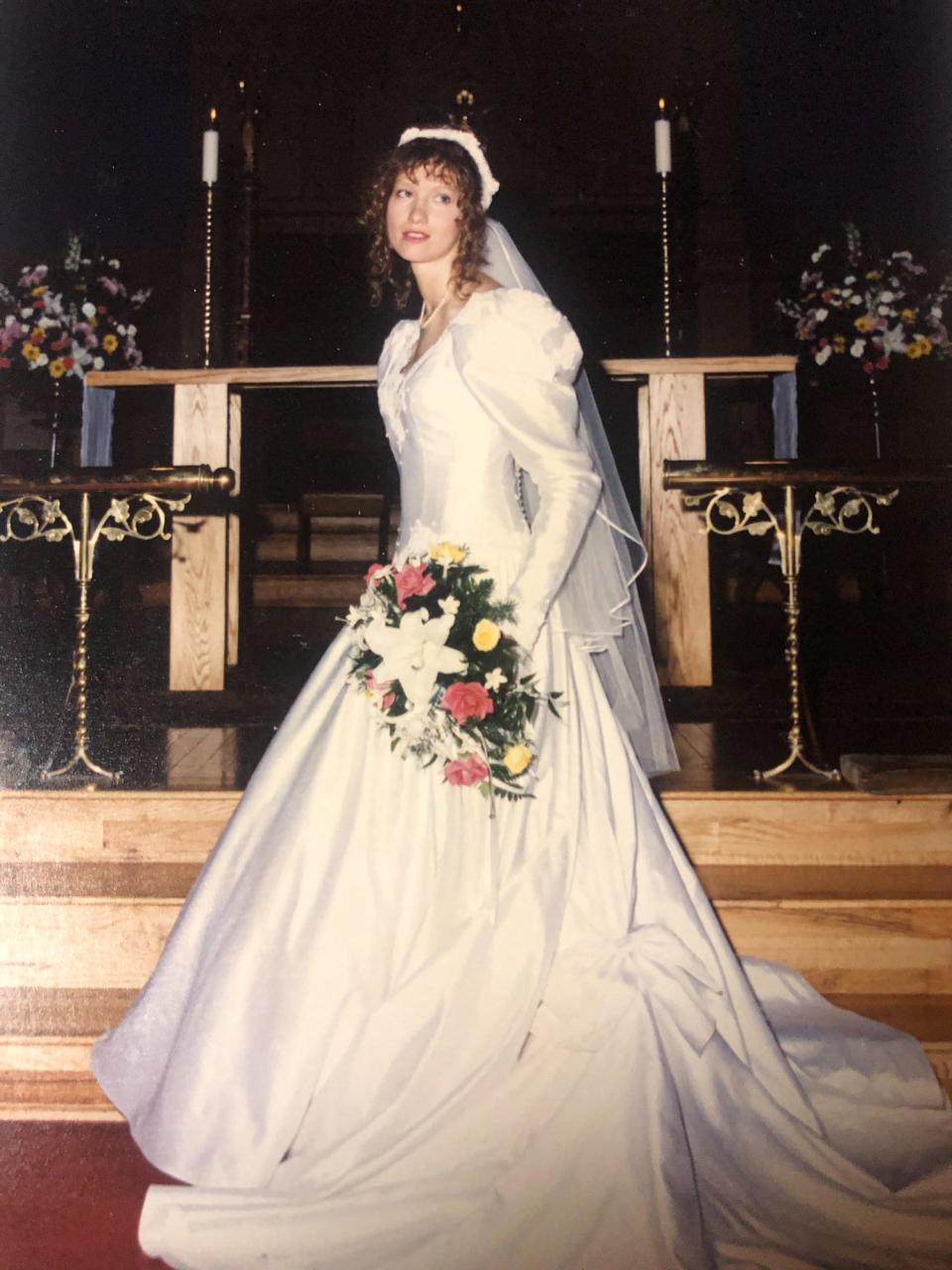
Now, photographs were all she had left. Stephens had sorted through some at the Mumper house after the murders, throwing away any that included Jeff. It didn’t take long to fill two brown paper bags with tarnished memories: Greta and Jeff’s wedding, Emma and Jake’s baby pictures with their father, and vacation photos full of happy faces.
Susan saved several photos in an envelope in her dresser. One is a portrait of Greta on her wedding day, angelic in white. Soft curls framed her face as a half-smile played across her lips.
Sometimes, Susan felt like screaming at the hopeful bride: “Don’t do it!”
But she pauses every time. Because without Jeffrey and Greta together, there would be no Emma and Jake. And, more than anything, Greta loved being a mother to her children.
Lauren Hash struggled, too. Sometimes, late at night, her mind would replay a loop of the memories of finding the bodies, like a movie she couldn't turn off. She developed a stutter that came out when she was stressed.
That day in September, she had planned to surprise Emma with the news that she’d passed the bar exam. Emma had just sent her a box of chocolates and good luck wishes.

Lauren had wanted to become a lawyer since she was 5 years old — but the dream died when Emma did. After finding the Mumper family’s bodies, Lauren couldn’t go anywhere alone. She barely left her parents' home.
Amanda Okulski was among those who went to the Mumper house after the killings. She was captivated by a photo from Jake’s room. In the frame, there was a young man dressed in a naval uniform. He looked strikingly like Jake. But it was his father.
For reasons she didn’t fully understand, Amanda took the photo of Jeffrey Mumper and carried it with her. People told her to burn it, but she held on.
Sometimes, Amanda would stare at Jeffrey Mumper’s young face and feel empty. It was disappointing — how similar Jake and his father looked, but how different they were as people.
She tucked the photo in her luggage when she went to New York to get away, staying with family there after the murders. She was up late most nights, unable to sleep. She called the suicide hotline at least six times in two months.
“My boyfriend was shot by his father, and his father killed himself and the rest of the family,” she would tell the crisis counselor on the line. “So, I’m not doing so hot.”
Healing is hard, comes slowly over years
By the first anniversary of the murders, Amanda had thrown away the photo of Jeffrey Mumper. It was time to try to let go of him — even if the anger remained.
She returned to Bloomington and Indiana University. Every once in a while, she drove through the Mumpers' old neighborhood to look at their house. Someone else lived in there now.

Lauren Hash's stutter improved with therapy. Though she was still not practicing law, she went back to school to get a master’s degree in library science. In class, she measured her anxiety on a scale of 1 to 10, knowing that when she reached a 6, she had to get out and breathe.
A tattoo on her wrist is a permanent reminder of Emma. Her inspiration was a cartoon hedgehog in a superhero costume — the logo for an online program Emma helped develop to assist children dealing with anxiety.
Stephens still cries at the thought of what happened to her friend, Greta, and the Mumper children.
But, sometimes, there are happy tears, when she reminisces on their 14 years of friendship.
A family once united by love, now divided in death
Greta, Emma and Jake’s ashes are interred at Riverside Cemetery in Greta’s hometown of Trenton, New Jersey. The Mumper name has been wiped away. They share one headstone with Greta’s maiden name engraved in capital letters, SIMON.
Jeffrey Mumper is not buried with them.

“He committed the ultimate divorce,” said Erika Sands, who arranged funerals for her sister, niece and nephew.
Amanda drove 11 hours to visit the cemetery on what would have been her two-year anniversary of dating Jake. She placed a bouquet of flowers on his grave. “I love you,” she said.
She had been thinking lately about the nature of the world and our humanity. Amanda doesn’t have the answers and isn’t sure she ever will, but one thing stood out to her.
“Jake was a good person because he chose to be a good person. Jeff was bad because he chose to be bad,” Amanda said. “Angels and devils, they’re made like that.”
Mary Claire Molloy is an award-winning journalist and recent graduate of Indiana University Bloomington. Her work has been published in IndyStar, The Washington Post, USA Today and The Tampa Bay Times. She started this project in a journalism class her sophomore year of college, sifting through thousands of homicide cases from the Gun Violence Archive and media reports to track the locations, perpetrator characteristics, type of weapon used and risk factors for these crimes. She is currently an intern at The Washington Post. Follow her on Twitter @mcmolloy7 or reach her via email at MaryClaire.Molloy@WashPost.com
This article originally appeared on Indianapolis Star: American Annihilation: Every 5 days in US a relative murders family
